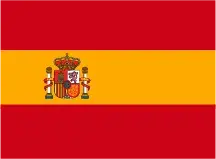A few months ago, Isabel del Olmo , Director of the Sustainable Mobility and City department of IDAE, stated about Moves Corredores:

“We hope that the preliminary guidelines for the programme will be published before the end of the year. We want the entire sector to see them before they are made official.”
Now, the Institute for Energy Diversification and Savings assures Mobility Portal España:
“It was put out for public consultation between June and July of last year and work is still being done on its definition.”
This incentive, which has a budget of 150 million euros, seeks to improve the connectivity of medium and long distance routes, covering shadow areas where the charging infrastructure is limited.
The sector tells Mobility Portal España: “It is positive that the Government is helping in these matters, as long as it is real and forceful support.”
In this sense, they emphasize the importance of focusing on why there are uncovered areas.
According to data from the General Directorate of Traffic (DGT), around 50% of vehicles in these regions are more than 15 years old, while at the national level, this percentage is less than 40%.
This context not only underlines the urgency of vehicle electrification in these places, but also the need to improve the charging infrastructure to make it viable.
“These are locations where no one wants to invest because of the existing obstacles, because the distributor does not provide power and imposes all possible obstacles,” they say.
They add: “In addition, there are no possible places to make the investment and it is preferred to omit the area, which could also be due to the lack of population, given that it is part of the ’empty Spain’.”
In this context, they are calling for the availability of more accessible data for CPOs, including updated figures on road capacity, the most recent and easily accessible information of which corresponds to the year 2022.
The publication of the map of charging points , promised by the Government in 2021, is also requested , along with the power map.
“We still do not have access to the energy capacity of the site in an accessible and agile manner, an aspect that should be under the management and responsibility of the public administration, rather than remaining in private hands,” say the sector.
What benefits will the public power map bring to the sector?
This would allow CPOs to have prior access to the necessary information on ideal locations for the installation of chargers.
This would not only optimise projects, but would also allow for more precise planning, reducing lead times, which can currently extend to up to two years.
Currently, each start-up requires a procedure with the distribution company, which can only be initiated once the infrastructure is completed and approved by the inspection.
After obtaining the technical-economic letter, you must wait again to connect the station to the electrical grid.
The National Commission for Markets and Competition (CNMC) is currently working on preparing the map, although its publication will take time.
It is estimated that this will be approved within a year and will be available for consultation in “approximately” two years.
What is the reason for these preparation times?
Mainly the process required by energy companies to carry out the corresponding mapping.
Recently, the CNMC has made progress in this regard with the presentation of Circular 1/2024.
Scheduled to come into force in April, this legislation promises to simplify the process of connecting to the electricity grid.
The Circular introduces tools such as a digital platform to manage access to the network and requires electricity operators to update power availability on a monthly basis.
It also establishes specific criteria for refuelling stations, eliminating unnecessary documentation and enabling abbreviated procedures.
For many industry experts, these measures are promising, but their effectiveness will depend on how they are implemented.
In this regard, they argue that a rule should be established with “strong penalties and response deadlines.”








